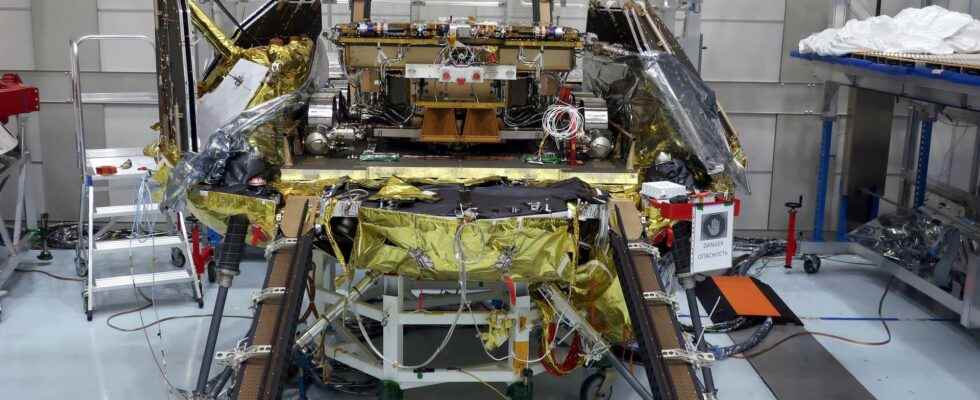The war in Ukraine also extends into space, at the risk of cooperation. Faced with Western sanctions, Russia isolates itself and joint space missions fall one after the other.
You will also be interested
[EN VIDÉO] ISS: until 2030, and after? The International Space Station will continue to welcome astronauts from all over the world for scientific missions until 2030. And to support space conquest missions which must take humans to the Moon and even to Mars. (in English) © NASA
At the head of the Russian space agency, Roscosmos, the eccentric Dimitri Rogozin has decided to question any collaboration between Russia and European and American partners. After deciding that the Russian space industry would no longer export its Soyuz engines and rocketsit is the turn of the scientific missions to be stopped.
The first mission on which the question quickly arose was ExoMars 2022. The mission robotics European Union was initially supposed to take off in 2020, but the crisis of the Covid-19 got the better of the deadlines and the firing was postponed to 2022. Indeed, to reach the red planetwe do not have a window shooting than every 24 months.
ExoMars 2022 was initially a collaboration with the Nasa. But the American agency left the project so the European Space Agency (ESA) turned to Roscosmos to provide a rocket, but above all the landing platform essential for the rover European. The Kazatchok platform provided by Roscosmos is in Turin at Thales Alenia Space, ready to leave for the launch pad at Baikonur. Today, his fate hangs by a thread, and will be fixed on March 16.
Uncertainty on the ISS
the weather had already cooled in 2014 between NASA and the Russian space agency Roscosmos with the annexation of Crimea. Today, Dimitri Rogozin does not miss an opportunity to question the Russian contribution to the international space station. This would deprive the station of its only engine, which is essential for raising orbits to avoid falling back to Earth.
For now, operations on the ISS remain unchanged. Difficult to know the opinion of astronauts Russians on board or in general. NASA does not publicly state any back-up plan for the US section of the ISS (along with the European and Japanese modules), but options are on the table. If ever Roscosmos decides to end its partnership now, the survival of the ISS would be sporting. If ever Russia decides to stop in 2024, the deadline common to all partners until now, then NASA would probably get out of it thanks to the contribution of private modules and its partners.
In any case, Russia’s exit from the ISS program would condemn Russia to fly on board the chinese space stationand that would probably be the end of the Russian civilian space program.
End of partnerships with Germany
Shortly after the start of the invasion of Ukraine, the German authorities asked the teams of the DLR (German space agency) to pause the activities of the eRosita telescope and to suspend its scientific cooperation with Russia. eRosita is one of the instruments on board the space telescope Russian Spektr-RG (Spectrum Roentgen Gamma)placed in a halo orbit around the Lagrange point L2 of the Earth-Sun system in 2019.
Spektr-RG is one of the few Russian scientific missions parallel to the manned flight program. The purpose of the mission is to observe theUniverse in X-rays, while the eRosita telescope specializes in the study of black holes. The project was co-funded by DLR and Roscosmos.
Interested in what you just read?
